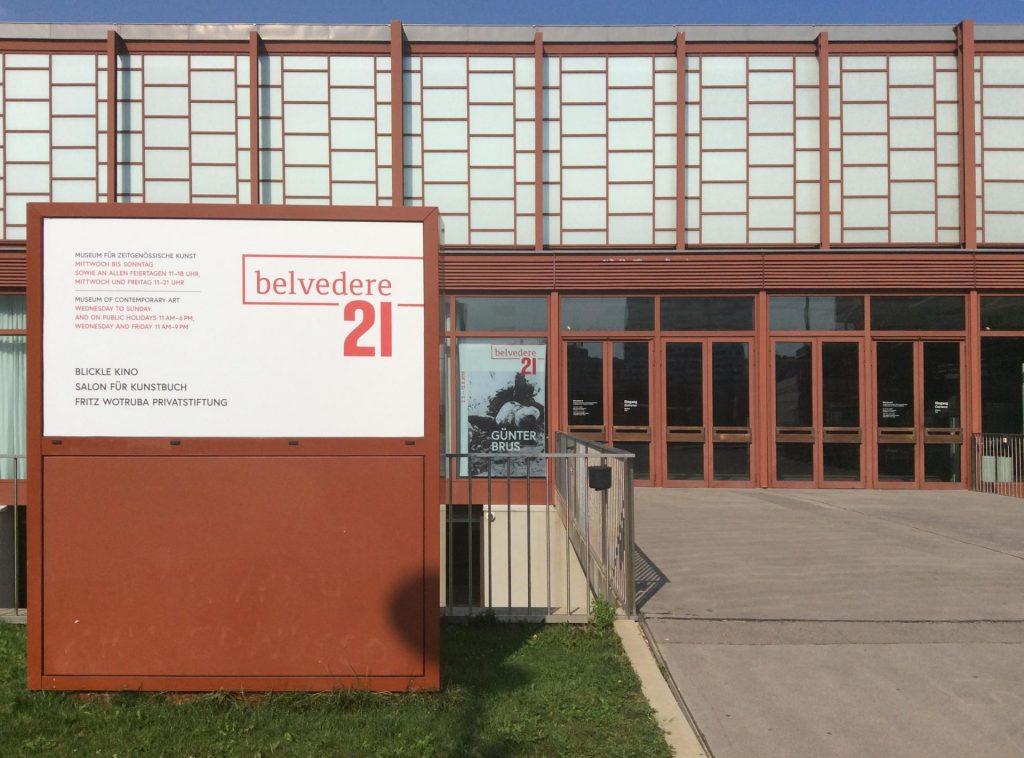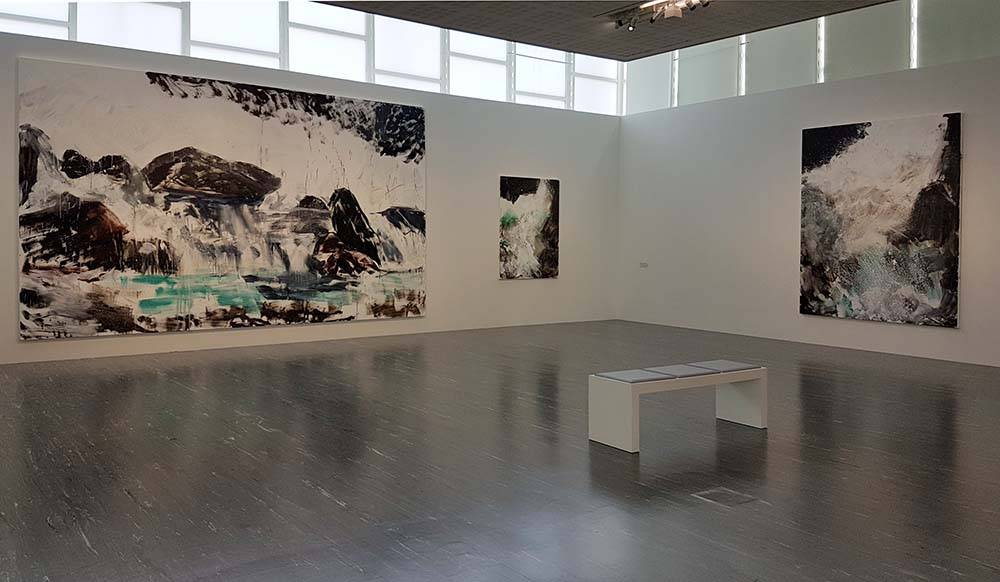Contemporary art museums in Vienna
Three main venues
Every big city like Vienna usually has several contemporary art venues which provide a place for public discussion. There are three major museums in the Austrian capital that are worth going to if you are curious to discover the current art agenda.
mumok – Museum moderner Kunst Stiftung Ludwig Wien

State collection of contemporary art
It is the oldest institution featuring contemporary art in Austria, it was founded in the post-war years as a part of the state policy of democratization. And although the museum’s statutes do not declare that it pursues an official policy in the sphere of art, this is the place where a socially appropriate version of the contemporary art process is demonstrated.
Special purpose architecture
After years of moving from one building to another, the museum finally found its home in the Museum Quarter. It is a rather central place, a part of the Hofburg Palace complex. But as all the palace quarters have long been taken up by old masters or government agencies, the former imperial stables have been allocated to a new museum. And it was decided to construct a building specifically for the needs of contemporary art.
The current building immediately reveals its purpose. It is a bulky volume of basalt lava (designed by Ortner & Ortner architects). After all, it is in such deliberately anti-decorative packaging that contemporary art is usually presented today.
Plane grey walls are also often used as an exhibition surface for video projections and attached installations.
The interiors of the exhibition spaces are also exceptionally modern. They are 4,500 square meters of easily transformable white halls, creating the perfect environment so that the viewer does not distract from artworks.
From Modernism to the present day
The mumok can not boast with a collection that one would call “of the worlds significance”. It is, of course, understandable if you consider the fact then until the end of the Nazi regime, today’s valuable exhibits were in the status of “degenerate art”.




However, the situation significantly improved when Irena and Peter Ludwigs bequeathed their collection to the museum. The most valuable works of Classical Modernism, Pop Art, New Realism, Fluxus, Concept Art came to the museum thanks to this gift. That’s why the words “Ludwig Foundation” stands on the facade of the building today.
Thanks to regular acquisitions, the mumok collection contains around 10,000 exhibits now. However, what you will see during your visit depends on the current exhibition.
Exhibitions with an educational objective
The current exhibition strategy is to show temporary thematic expositions, made mostly of works from the museum’s own collections.
Since the museum has to earn a significant part of its budget, the number of visitors plays a substantial role. That is why every exhibition at the mumok has to be both spectacular and comprehensive. So the team of curators do their best to ensure that more than two hundred thousand spectators come to the museum every year.




Maybe this is the reason why you never see scandalous or acutely topical projects here. All expositions are well-rounded and well-digestible. Already the exhibition titles promise both education and visual entertainment: “Patterns and scenery. Ornament as a promise”, “Vertigo. Op Art and a History of Deception 1520–1970”, “to expose, to show, to demonstrate, to inform, to offer. Artistic Practices of the 1990s”.
The exhibitions exploring the problematic areas of modernity and consisting entirely of borrowed exhibits, such as “Gender Check: Femininity and Masculinity in the Art of Eastern Europe”, appear in the program not very often.
At least one room in the museum is reserved for an individual exhibition, often also commissioned by the mumok. Since there are three or four displays held at the same time, there is always something interesting for every visitor.
Address: Museumsplatz 1, 1070 Wien
Opening hours: Mo 2 pm – 7 pm, Tu – Su 10 am – 7 pm, Th 10 am – 9 am
Practical info: cloakroom, lockers, cafe & souvenir shop
Official website of the MUMOK
Belvedere 21
The name itself already tells us that this museum is part of the National Gallery Belvedere and that 21st-century art is on display here.


It is quite a new museum. The first exhibition opened here only in 2011. But it was here that the first state museum of contemporary art 20er Haus, i.e. “20th Century House”, today is known as the mumok, was originally housed.
Designed for the Brussels Expo 58, the pavilion later was re-installed in the Schweizergarden city park, near the Belvedere Palace. However, the construction of glass and metal was not very convenient for exhibitions. Therefore, as soon as there was an alternative, the museum moved to a more suitable building, while the pavilion was used as storage.
Large-scale presentations of the national art scene
It was decided to give a new life to this place on a wave of optimism in the cultural tourism of the early 2000s. The empty building was transferred to the National Gallery of Art for the representation the entire spectrum of Austrian art: the Middle Ages in the Lower Belvedere, Baroque and Art Nouveau in the Upper Belvedere and contemporary authors in the Belvedere 21.
Since the Gallery’s focus lies on national art, the majority of exhibitions present Austrian authors. Most of them are those who have not yet achieved international recognition. Exhibitions of Herbert Brandal, Eva Grubinger, Werner Feierzinger and Christian Attersee were held there recently.
International context for Austria
However, works by foreign artists who in one way or another work on topics relevant to the local context also can be found here. For example, the German-born Anna Witt addresses themes of the social significance of Austrian historical symbols, or the British Rachel Whiteread, the author of the Holocaust monument at Vienna’s Judenplatz.
Despite the constructional adaptation of the building, it remains a rather specific exhibition space. Thus, it is better suited to installations than to video art, and it implies certain restrictions on exhibitions here.



Depot of national art
Belvedere 21 is also the storage site for the so-called “Artothek des Bundes”. It is a state art collection consisting of works purchased as a part of a support programme to the national art scene. Any of these 37,000 objects can be rented. And not only for the exhibition but also for office decoration. Many of the sculptures from this collection are placed along the road from the Palais Belvedere to the Belvedere 21.
Be sure that whenever you come to this museum, you will learn something new about the art scene in Austria. But since the exhibitions are very different, unless you are interested in absolutely everything that is called contemporary art, you should check the program in advance.
Address: Arsenalstraße 1, 1030 Wien
Opening hours: Tu – Su 10 am – 6 pm
Practical info: lockers, cafe & souvenir shop
Official website of the Belvedere 21
Kunsthalle Wien


This institution started with a shipping container on the Karlsplatz square in the city centre. It was later replaced by a small building, now known as Kunsthalle Wien Karlsplatz. One half of the building is occupied by a popular café and another half hosts an exhibition hall.
The main projects take place now in the Kunsthalle in the Museum Quarter. The modern exhibition space hides behind the old facade of the stables building. In Austria, the law on the preservation of heritage prohibits changing the entourage of historical buildings. But inside the hall, nothing prevents artists from presenting a project of any degree of technical complexity.
Discussion within global art discourse
In Vienna, the Kunsthalle is a kind of embassy of the international art scene. Or an analogue of a ”world news today” section in a newspaper. But just as the policy of a newspaper depends on its editor, so does the policy of the Kunsthalle. This is especially important in the absence of an own collection. That is why the exhibition program of the Kunsthalle, which has existed since 1992, changes very much when directors change.
That is why the resignation and appointment of directors is always a matter of political importance here. For example, Herald Matt, who was actively lobbying a “big international project for Vienna”, was discharged in 2012 because of a later unconfirmed accusation of using the institution’s resources for personal purposes. And Nicolas Schaffhausen known for his left political views withdrew from his office because of “Austrian nationalistic policy”.



Kunsthalle today
The Kunsthalle is now headed by three directors at once. Namely Sabina Sabolović, Nataša Ilić and Ivet Ćurlin of the curatorial team What, How & for Whom. Their first exhibition “…of bread, wine, cars, security and peace” explores the problems of inequality, globalization, climate change – i.e. all the most relevant topics in the international art discourse. The exhibition poster is full of names of artists and art groups without mentioning their country of origin. We live in a global world, we watch international art, so as they say “who cares”.
For sure this is the place, where you can expect to find the most radical art that Austria can tolerate in the state-financed institution.
It is important to note that for this institution communication with the audience is as crucial as exhibitions. That is why there are especially many discussions, meetings with artists and various programs that involve the viewer in thinking about important issues of our time.
If you are looking for controversial, vivid, disturbing art, you will most likely find it all here.
Address: Museumsplatz 1, 1070 Wien
Opening hours: Th – Su 11 am – 7 pm
Practical info: lockers, cafe & souvenir shop
Official website of the Kunsthalle
You might also find it interesting:



